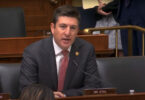In a speech at the Brookings Institute today, Bank of England Governor Andrew Bailey discussed the potential for stablecoins and central bank digital currencies (CBDC). He doesn’t preclude a CBDC from existing alongside stablecoins and even stored in the same wallet. However, he made it clear that no stablecoin will be allowed to become a systemic payment method before central banks have agreed on standards.
Facebook’s Libra digital currency didn’t get a mention in the speech. But yet it seemed to be at the heart of his message.
Bailey outlined three kinds of innovative new monies. He dismissed cryptocurrencies as inappropriate for payments. Secondly, there’s e-money as defined by the EU and implemented in the UK. Here he is concerned that the public isn’t fully aware of the lack of government guarantees. And in the case of the issuer’s failure, there’s no guarantee of a return of funds.
It seems he’s keen to address some of these drawbacks with stablecoins. “If stablecoins are to be widely used as a means of payment, they must have equivalent standards to those that are in place today for other forms of payment types and the forms of money transferred through them,” said Bailey.
The assets that back the stablecoin matters. For example, government bonds may be low risk, but that’s not the same as no risk.
Bailey painted the picture of going into a store and the shopkeeper doesn’t examine which bank issued your debit card, because they’re confident of payment. “It is these protections that prevent a return to the literal wild-west in which individual banks issued their own private currencies,” said Bailey.
“Stablecoins used in systemic payment chains should meet the standards equivalent to those expected of commercial bank money in relation to stability of value, robustness of legal claim and the ability to redeem at par in fiat,” said the Governor, referring to the Financial Stabliity Board stablecoin report.
He emphasized the need for stablecoins to comply with both domestic and international standards. For example, if there was a sterling stablecoin, he expects it to be issued by a UK registered company. His bigger concern is a global stablecoin where the issuer is in just one jurisdiction. This is where international regulatory coordination is required and he mentioned the G20.
“The starting point for a global stablecoin should be based on single currencies. We should not run before we can walk,” said Bailey. Now it’s clear to see how Libra 2.0 evolved.
Despite his warnings, Bailey was very positive about the benefits of innovation and stablecoins. He believes stablecoins can reduce friction, increase convenience, and provide integration opportunities with other technology platforms. “Innovation is a good thing. As authorities and regulators it is not in our interest – the broad public interest – to stop innovation,” said Bailey. But he highlighted the strains on regulatory frameworks, especially oversight.
Bailey also raised the point that money has both a social and financial function. Digital currencies could reveal private information on payment behaviour so privacy requires safeguards. There’s also the need to encourage financial inclusion and competition.
He touched on the Bank of England’s exploration of central bank digital currencies (CBDC). While he sees great potential, he referred to the usual considerations. What might the impact be on monetary policy? Is there a risk of disintermediating banks and increasing the cost of credit? And how would roles be split between the public and private sectors?
He concluded that it may be ‘blindingly obvious’ that payments need to have the assurance of value that comes with money. However, “it isn’t so obvious any more, but it should be,” said the Governor.






